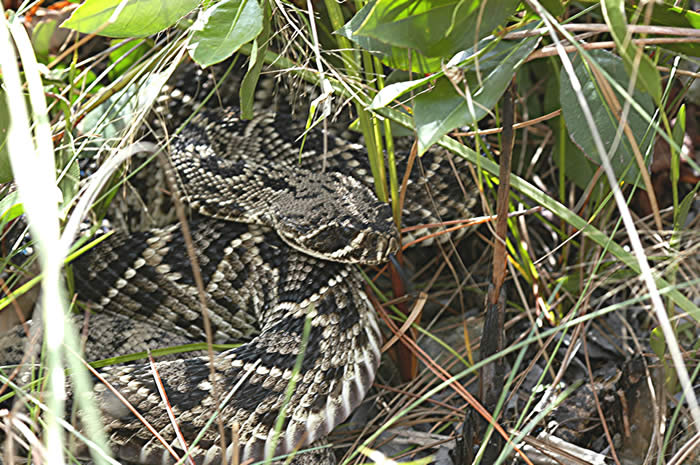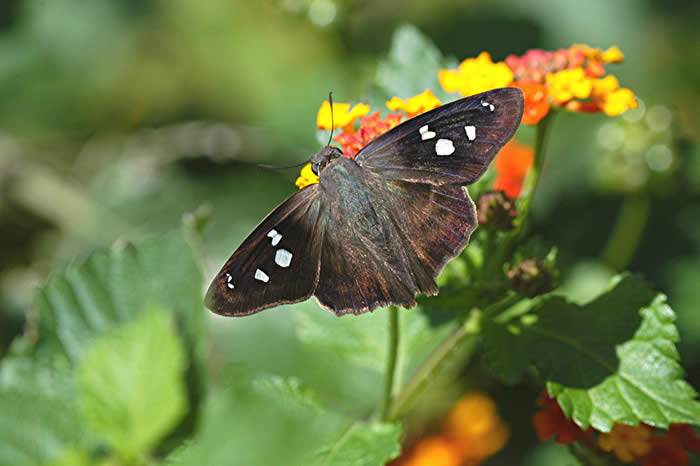Self-Guided Tours
South Florida butterfly enthusiasts are indeed fortunate, for few other geographical areas in North America offer such a year-round bountiful supply of butterflies, both rare and beautiful. And, there is the ever present possibility that a tropical stray will appear around the very next turn in the path.
- Upper Keys and Lignumvitae Key
- Bahia Honda and Big Pine Key
- Key West and Stock Island
- South Miami-Dade County
Photo at right: Hammock Skipper, Polygonus leo, nectaring on Lantana at The Kampong, Coconut Grove, Florida. Photo by David L Lysinger.
These favored “butterfly destinations” are usually dependable for the species mentioned. Most can be conquered in a day or less; however, travel time to-and-from should be taken into account. A drive from Miami to the Lower Keys for example, takes about 3-4 hours, so you may opt to stay overnight.
A brief list of target species is included. But, keep in mind that weather, time of year and recent spraying for mosquitoes might affect your success. Remember to always expect the unexpected as you search for butterflies in our area. The exceptionally rare Lyside Sulphur, Kricogonia lyside, Amethyst Hairstreak, Chlorostryman maesites, Many-banded Daggerwing, Marpesia Chiron, and Pale Cracker, Hamadryas amphichloe, were all sighted in Miami-Dade or Monroe Counties during 2004 and 2005. Cuban Crescents (Phyciodes frisia) were numerous on Key Biscayne in 2007 and in Everglades National Park in the summer of 2010.
Actually, any park, yard, road-side or disturbed site can be surprisingly productive if the appropriate plants are present.
Simple common sense is important when looking for butterflies in South Florida. Wide-brimmed hats, mosquito repellent, water, field guides, close-focus binoculars and a watchful eye for our seldom encountered venomous snakes are excellent prerequisites.
 Photo at right: Eastern Diamondback Rattlesnake, Crotalus adamanteus, Long Pine Key, Everglades National Park. Photo by David L Lysinger.
Photo at right: Eastern Diamondback Rattlesnake, Crotalus adamanteus, Long Pine Key, Everglades National Park. Photo by David L Lysinger.
Due to a ferocious hurricane season, 2005 was a devastating year to many of the Southeast Florida butterfly locations. Five years later, the vegetation has made a good comeback. While many of our South Florida critically imperiled species survived with flying colors, some species have yet to rebound. Butterfly populations sometimes disappear and just as mysteriously re-appear, so keep looking and report interesting sightings to us at Miami Blue Chapter.
Above all, please be respectful of butterfly habitat. Don’t trample on potential nectar source plants or unnecessarily handle larval host plants. (Some of our smallest and rarest butterflies lay tiny, almost invisible eggs, which are followed by tiny vulnerable caterpillars).

